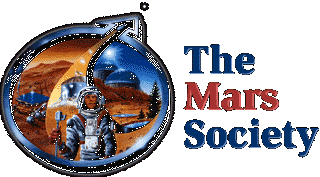DAYTON DAILY NEWS
Copyright (c) 1998, Dayton Newspapers Inc.
DATE: Friday, December 4,
1998
TAG: 9812040095
EDITION:
CITY
SECTION:
NEWS
PAGE: 10A
SOURCE: By Timothy R. Gaffney Dayton Daily News
KENNEDY SPACE CENTER, Fla. - Dr.
Tamarack Czarnik drove to Florida to watch the
space shuttle launch, but his view is different
from the average space
fan's. The Huber Heights resident is
a medical doctor halfway through Wright
State University's aerospace medicine program,
which trains physicians for
aviation- and space-related medical work. Besides
coming down to watch Endeavour lift off, Czarnik
is observing NASA's flight surgeons and taking in
lectures onbiomedical space research.
Czarnik, 38, is a child of the Apollo era. He
grew up in the 1960s when
many people thought the moon landings would lead
quickly to a moon base and
expeditions to Mars. Czarnik said he
dreamed of being a doctor, but he also dreamed
about space. In fact, he said, he had `a rather
naive dream of being the first doctor on Mars.'
More than a quarter-century after the last
Apollo moon flight, there's no
moon base and no Mars expedition on the space
agency's timetable. Most of
NASA's efforts over the next six years will focus
on building the International Space Station, an
orbiting laboratory where scientist astronauts
will probe the frontiers of science, but not the
solar system.
But Czarnik hasn't given up his dream. He's
just modified it to fit
reality - and is striving to modify reality to
fit his dream. `I've come to accept
the fact that I will probably never go in space
myself, much less be the first doctor on Mars,
just because my vision is so terrible. I'm
tremendously nearsighted,' he said. `I would
still like very, very much to see other people
go. And I wanted to be able to say at the end of
my life, 'Yes, I contributed to that.''
So Czarnik is aiming at a career in aerospace
medical research, to
develop medical procedures needed to treat
illnesses and injuries on long flights
millions of miles from the nearest hospital.
He is also involved in a grassroots movement
to prompt NASA to make a
Mars expedition a high priority. He has organized
a 30-member Ohio chapter of the Colorado-based
Mars society, which was founded in August.
Czarnik said the society doesn't
advocate rushing to Mars. `Mars is
roughly 1,000 times more distant than the moon,'
he said. `If we sent a mission to Mars tomorrow,
I don't believe that we would make it. The thrust
of the Mars Society is that if we directed an
initiative at Mars starting now ... challenging
us to make it to Mars by the end of the (next)
decade, I believe then we could do it.'
Some Mars advocates claim the space station
program siphons billions of
dollars from research needed to mount a Mars
expedition. Czarnik agrees more
money should be spent on Mars research, but he
believes the space station is
an essential step. `There are certain
problems with long-duration space flight we
really haven't worked out yet,' he said. Ohio
Sen. John Glenn spotlighted several
with his return to space, which he said was aimed
at comparing the effects
of aging with similar effects astronauts
experience in the absence of gravity.
One of the `real show-stoppers' to a
Mars expedition is the gradual weakening of bones
in microgravity, he said The rate of
bone loss varies unpredictably but doesn't seem
to stop, he said. Biomedical research
on the space station will seek to learn how to
counter bone loss and other problems in space
flight. `There's a tremendous amount
of research (on the station) that will benefit a
mission to Mars,' Czarnik said.
|



